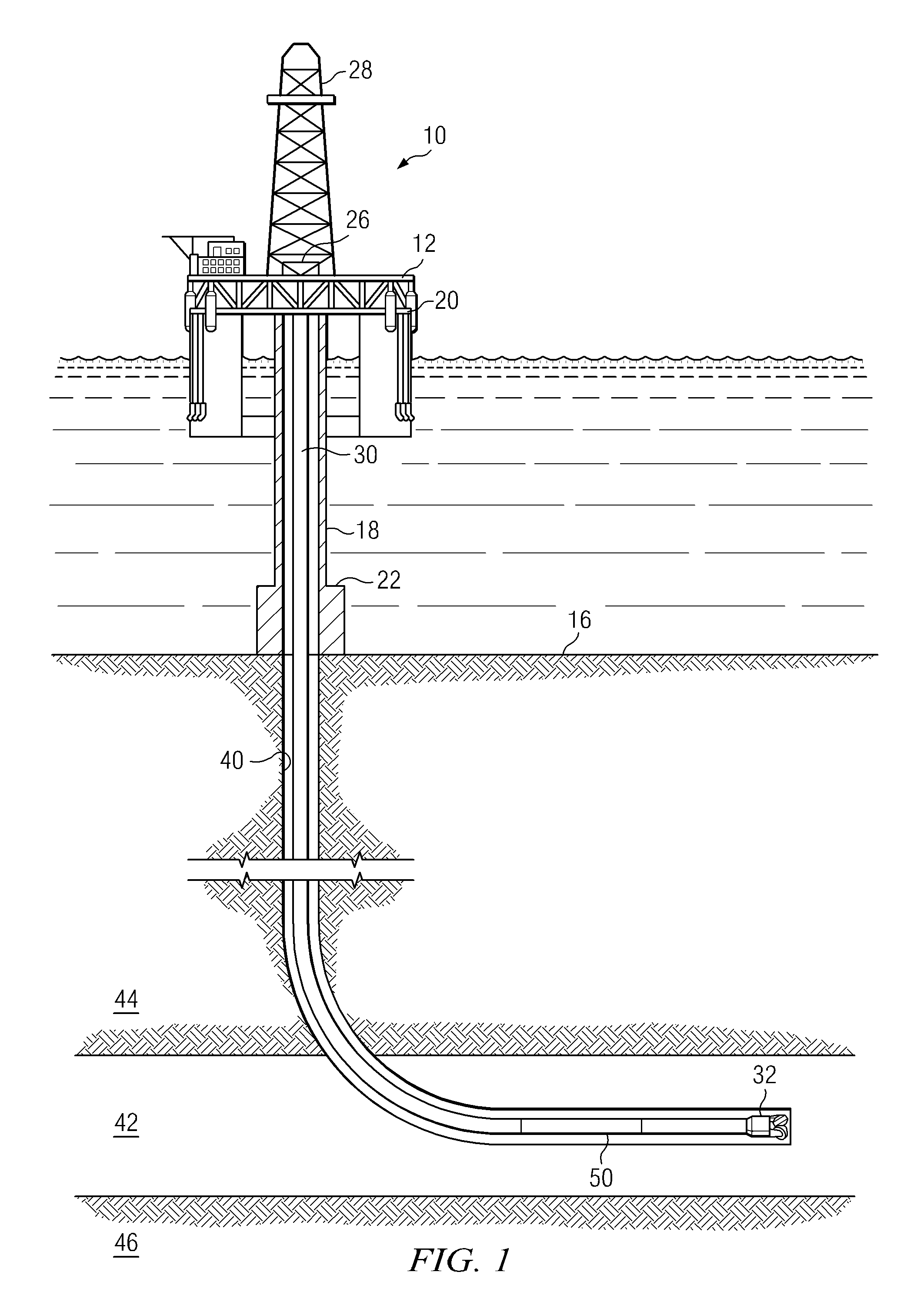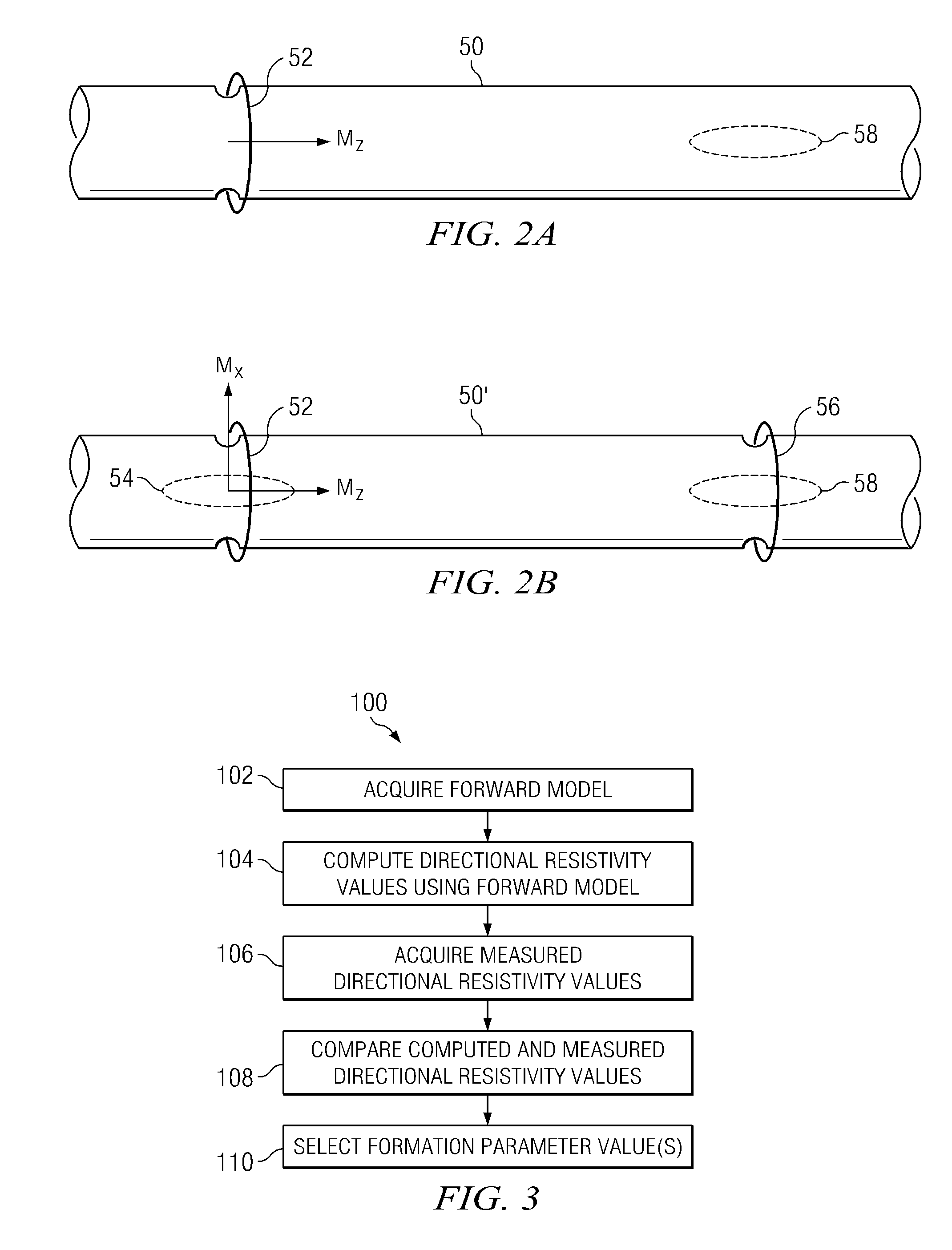Method of directional resistivity logging
a directional resistivity and logging technology, applied in seismology for waterlogging, using reradiation, instruments, etc., can solve the problems of not being suitable for real-time drilling operations, not being able to generally be forward modeled, and requiring a highly processing intensive three-dimensional forward model, so as to reduce the processing time of inversion, and improve the accuracy of inversion
- Summary
- Abstract
- Description
- Claims
- Application Information
AI Technical Summary
Benefits of technology
Problems solved by technology
Method used
Image
Examples
embodiment 50
[0026]FIG. 2B depicts a tool embodiment 50′ including first and second collocated axial and transverse transmitting antennae 52 and 54 and first and second collocated axial and transverse receiving antennae 56 and 58. In the depicted reference frame, the axial and transverse antennae have magnetic moments MZ and MX that are coincident and transverse with the tool axis. Those of ordinary skill in the art will readily appreciate that logging tool 50′ is configured to measure the HZX and HXZ cross coupling components as well as the HZZ and HXX coupling components.
embodiment 100
[0027]FIG. 3 depicts a flow chart of one exemplary method embodiment 100 in accordance with the present invention. Method 100 includes a method for estimating a formation parameter from acquired directional resistivity measurements. The parameter may include, for example, at least one distance to a remote bed. A forward model of a subterranean formation is acquired at 102. The forward model includes at least one analytical expression relating a directional resistivity measurement (e.g., the aforementioned HZX and HXZ cross coupling components and / or the HXX and HZZ coupling component) to various formation parameters (e.g., distance to a remote bed). The analytical expression includes at least one image source term. Such image source terms are described in more detail below. At 104 a processor utilizes the analytical expression(s) to compute a plurality of hypothetical directional resistivity measurements at a corresponding plurality of formation parameter values. The processor is pr...
PUM
 Login to View More
Login to View More Abstract
Description
Claims
Application Information
 Login to View More
Login to View More - R&D
- Intellectual Property
- Life Sciences
- Materials
- Tech Scout
- Unparalleled Data Quality
- Higher Quality Content
- 60% Fewer Hallucinations
Browse by: Latest US Patents, China's latest patents, Technical Efficacy Thesaurus, Application Domain, Technology Topic, Popular Technical Reports.
© 2025 PatSnap. All rights reserved.Legal|Privacy policy|Modern Slavery Act Transparency Statement|Sitemap|About US| Contact US: help@patsnap.com



